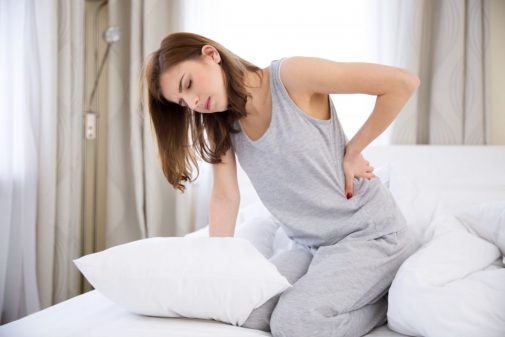Back pain? Try this, not that

Did you know that nearly a quarter of adults in the U.S. have suffered from at least one day of back pain in the last three months? In fact, back pain is one of the top reasons people seek physician appointments.
But what’s the best way to treat it?
Many people consider medications the best option, but new recommendations from the American College of Physicians (ACP) offer a very different answer and say prescription drugs should be a last resort. The guidelines stress the importance of using non-drug therapies like massages, heat therapy and even acupuncture.
Some highlights of the ACP’s recommendations include:
- For acute and subacute low back pain, non-drug treatments such as superficial heat, massage, acupuncture and spinal manipulation should be used because low back pain generally improves over time regardless of treatment. If drug treatments are prescribed, it should be nonsteroidal anti-inflammatory drugs or skeletal muscle relaxants.
- For chronic low back pain, non-drug treatments should be tried initially. These include exercise, multidisciplinary rehabilitation, acupuncture, mindfulness-based stress reduction, tai chi, yoga, motor control exercise, progressive relaxation, electromyography biofeedback, low-level laser therapy, operant therapy, cognitive behavioral therapy, or spinal manipulation.
- For chronic low back pain unresponsive to non-drug therapy, nonsteroidal anti-inflammatory drugs can be considered. Opioids should only be an option if all other treatments have failed and only if the potential benefits outweigh the risks. Physicians must have a discussion of the known risks and realistic benefits with the patient prior to treatment.
Dr. Jonathan Citow, a neurosurgeon at Advocate Condell Medical Center in Libertyville, Ill., agrees with the new recommendations.
“Patients can sometimes improve low back pain with core strengthening exercises, stretching, physical therapy and/or chiropractic treatment,” says Dr. Citow. “However, when patients have seen little to no improvement with the non-drug, non-surgical options, or if they have significant radicular leg pain, numbness or weakness, they should seek a consultation with a neurosurgeon.”
Dr. Citow explains the most common causes of low back pain are deconditioning, obesity, degenerative disc disease and trauma. Yet, many times, low back pain can be avoided or relieved from lifestyle changes, he says.
“Two of the best things you can do to prevent low back pain are to get adequate exercise and maintain a healthy diet. These two things go a long way in helping to build a strong core, which is key to minimizing pain in the lower back.”
Related Posts
Comments
About the Author
health enews staff is a group of experienced writers from our Advocate Health Care and Aurora Health Care sites, which also includes freelance or intern writers.

















